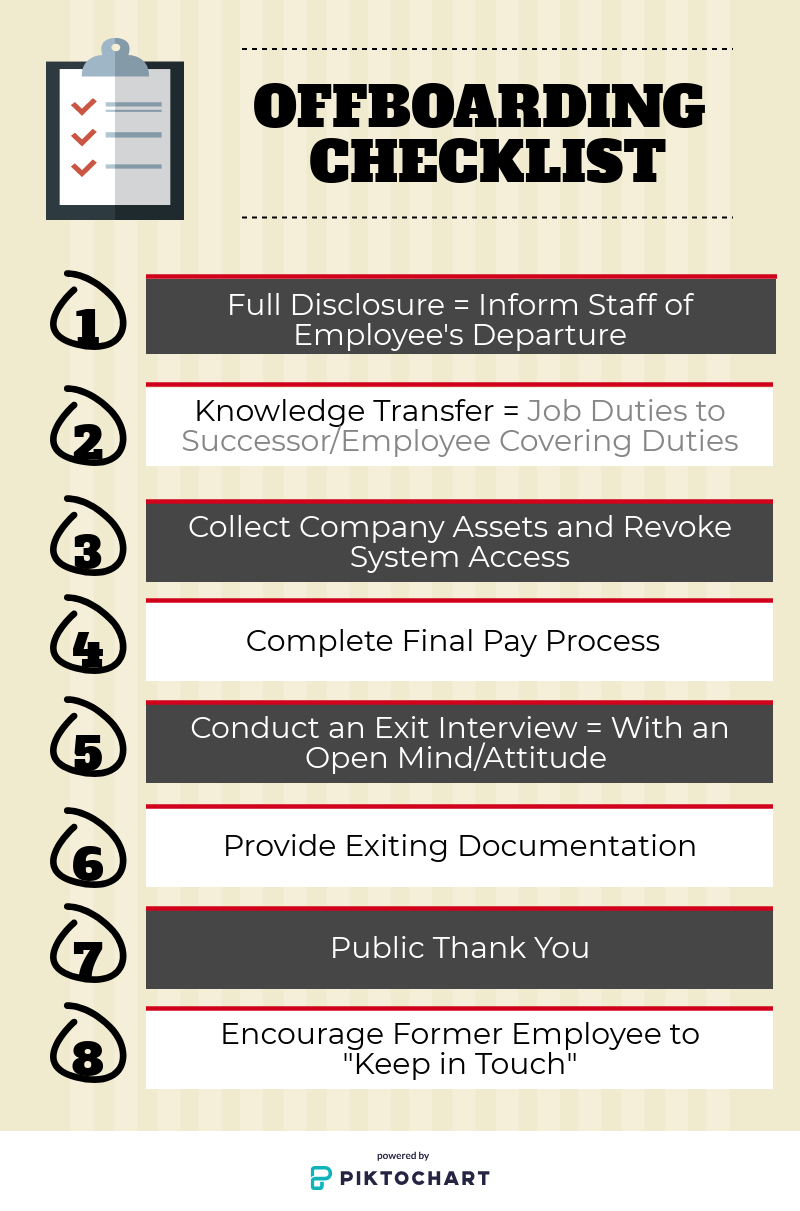Most employers have a process for exiting employees when they leave the organization. However, what about offboarding? When an employee makes their impending departure known, an employer should embrace it as an opportunity rather than an obligation. Especially in today’s digital world, employers should go beyond exiting employees with offboarding.
Offboard, Not Exit
When an employee quits, chances are the boss and the HR representative are the last to know. The focus is usually around paperwork, minimizing the risk of legal or security issues, followed up with the cursory exit interview. But to ensure the company culture is not damaged, employers must take the time to offboard, not just exit an employee.
Most organizations embrace onboarding practices to ensure a smooth, positive transition into the company culture. However, when someone leaves the fold, it is a perfect opportunity to learn from mistakes and keep options open (e.g. boomerang employees). Therefore, offboarding should be adopted into HR procedures. What better PR than from a former employee who “ended on a high note”?
Don’t Burn Bridges
There are many reasons to not “burn your bridges” when it comes to someone taking their talent elsewhere. In general, it’s good PR when someone leaves knowing they were valued, and that they will be missed. After all, an employer may end up rehiring the individual in the future. However, if an employee’s exit from the organization is not ended with care, there is a real possibility for immediate repercussions on social media channels. What takes moments to post, tweet or share can cause irreversible damage to a company’s outside reputation and inside culture.
There is also an obligation for the employer to ensure everyone’s safety by minimizing the chance for workplace violence. When an organization adopts offboarding in place of exiting employees, the culture adjusts. It can be the difference between a disgruntled employee who feels undervalued and unappreciated to an employee who feels it is time to take their talents elsewhere.
Offboarding Checklist
Offboarding is not just well wishes and parties with cake in the lunchroom. It is a comprehensive way to wish the employee well, while protecting company assets and proving transparency to the remaining workforce.
Below is a recommended offboarding checklist:
- Provide full disclosure that the employee is leaving the organization to staff/coworkers (especially IT department)
- Start knowledge transfer early to their successor or the employee who will cover their work
- Collect company assets and revoke system accesses
- Complete final pay process
- Conduct an exit interview with an open mind and learning attitude
- Provide letters of reference and exiting documentation
- Publicly thank that employee for their work with the organization
- Encourage the former employee to join a company alumni group to keep in touch and welcome them back if they decide to boomerang back to the organization
Offboarding enables a smooth transition of employment. It is a great opportunity to enrich the company culture for remaining employees and attract future talent to the organization. Remember, those who leave the organization are as important as those who join the organization.
SACS Consulting Can Help You Establish Sound Offboarding Procedures
SACS Consulting & Investigative Services, Inc. can help your organization establish sound HR policies and procedures from hiring to firing to improve workplace culture, help prevent disagreements and make certain everyone is treated equally. We also provide customized training to address specific issues like Creating and Maintaining a Positive Company Culture and Management Guide to Observation, Documentation and Confrontation. Contact Us to find out how we can help put you back in control of Human Resources!


